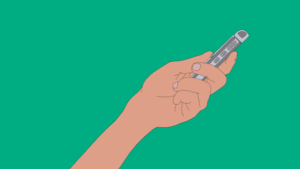
Our user research mission statement for 2022
User research is a key element of our product teams at Zaizi. We put people at the heart of what we do.
User research is all about understanding people and how they interact with technology. Our researchers use a variety of methods – from interviews and surveys to usability tests and observational studies – to uncover insights about users’ needs and frustrations.
Why do we do this? It’s simple: research drives innovation. Teams can use research insights to design new and effective solutions, or make existing products and services better.
Writing a user research mission statement
Over the past few weeks, our user research team have been reflecting on our 2021 successes and thinking about our goals for the year ahead.
As part of these discussions, we’ve written a user research mission statement to communicate who we are and unite the team under a common purpose:
“To deliver high-quality, timely user research that solves real problems, drives great products and services and informs policy making.”
In this post, some of the team unpack this user research mission statement, breaking it down piece by piece. What does it mean? And how is it helping us strive for success in the work we do?
“Delivering high-quality, timely user research”
Bradley Reeder, Senior User Researcher
“User research is often conducted in an agile environment where people work and make decisions in bi-monthly iterations. The focus is on doing ‘just enough’ research to keep the voice of the user at the fore, helping to guide the development of the product or service. Most clients work to tight deadlines. A core challenge of user research is how you can be rigorous in your research methods while also delivering research in a timely way when it is most needed.
“In a recent discovery with a central government organisation, we delivered beyond our brief. This is mostly as at Zaizi we take GDS’s mantra – ‘user research is a team sport’ – to heart. We made good use of existing research skills across our team. For example, our content designer’s skills in transcription, or our service designer’s skills in drafting user journeys. This improves understanding of research across the team. It also frees up the researcher to do what they do best: make sense of mountains of data!
“Next as an organisation, we’re investing in drafting a playbook. We’ll use this to continue training our team in research skills, ensuring that we work to a consistently high standard.”
“Solving real problems”
Charlene Jennett, Senior User Researcher
“User researchers strive to gain a deep understanding of users, investigating their context-of-use, goals and motivations, decision-making processes and behaviours. This enables us to uncover insights that are unexpected or contradictory. It also provides us with evidence to challenge assumptions when needed.
“In a recent discovery with a government organisation, we showed how making a paper-based service digital could streamline data collection and retrieval for users. But our team also went beyond the brief, identifying new work streams to create a more efficient and effective service. This included changes that didn’t involve technology, such as improving communications about the service.
“When things are complex, it’s important to understand the bigger picture. This helps us to ensure that the products we design are solving real problems that will have real benefits to users.”
“Driving great products and services”
Kelly Wharton, Senior User Researcher
“Once we have that in-depth understanding of users and insights into their journeys, it’s time to bring that knowledge to the product team and stakeholders. It’s our job to be the user’s voice in the room as the team shapes the designs, refines user stories and manages the backlog. That way, we can support development decisions which ultimately result in products or services which are useful and easy – maybe even delightful! – to use.
“In recent research work for a government client, we encouraged members of the team to observe remote research sessions. This is a valuable opportunity to them to hear from users directly. We’ve also been refining our show and tells and playbacks, making sure that we present findings, user needs, quotes and videos in a way that is clear, impactful and easy to act upon.”
“Informing policy making”
Louis Pattison, Senior Content Designer
“Through our work with government departments, we often work with policy teams at a stage when policy is being developed.
“For example, our recent discovery for the Department of Levelling Up, Housing and Communities (DHLUC) explored the idea of a national landlord register for England. We assembled a multidisciplinary team, with researchers, designers and solution architects working closely together. By combining research and technical insight, we created a list of recommendations for how a register might effectively function.
“In a discovery, you produce a lot of data. When communicating findings to policy makers, it’s important to find ways to prioritise what is most valuable. In 2022, it’s our ambition to improve the ways we communicate our research findings. Using and refining techniques like experience maps, personas and show and tells, we’ll keep delivering our customers deep insights in a way that’s easy to follow and act upon.”
What’s next for 2022?
Taking this time to write a user research mission statement has been really valuable. It has provided our user research team with a stronger sense of identity and direction. It has also inspired us to continue working hard to deliver the best user research to our clients.
In line with Zaizi’s core values, we are all passionate about championing user research. As our team continues to grow, we’re excited about what the future will bring.
-

How Zaizi’s user-centred approach won the trust of border officers
-

3 ways to master agile delivery in government
-

Why you should involve solutions architects early in agile projects
-

How to effectively manage legacy technology in government
-

User research in government digital services: 7 steps to get it right
-

User-centred design at Zaizi: Putting users first
